Degree show: ‘Art is seen differently now’
12 visual artists show their master’s work at NCA till December 31.
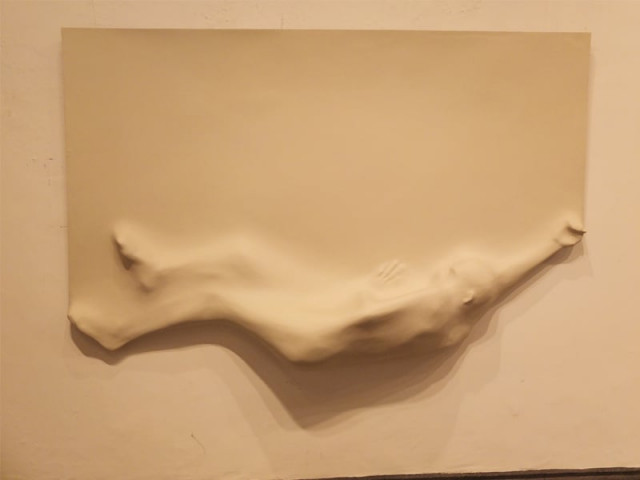
Degree show: ‘Art is seen differently now’
Twelve artists showcased their thesis work at the National College of Arts (NCA) Master Degree Show on Saturday at the Zahoorul Ikhlaq Gallery.
Nashmia Haroon decided to pursue her master’s degree at the NCA after teaching for four years at the Beaconhouse National University. “The NCA provides a close link to traditional practices. I wanted to get back to my roots even though my medium is contemporary. The discipline one can derive is still applicable.”
Her thesis work, The Aesthetics of a System Default, represents two years of research and comprises photographs, video and an installation. “I’m not fixated on one medium. I did my undergraduate work from NCA in painting but have also been working with photography for the past 12 years. I choose the medium. Sometimes the idea dictates the medium. If I feel that my work would express itself better in another medium I just go with it. There is no limitation there.”
Haroon said that she did not know any artists who work in only one medium. “We are visual artists. That is the beauty of it. People appreciate art differently now.”
“I’ve been documenting the changes around my city, Lahore, for the past two years or so. There is an element of documentation but my thoughts are also reflected in my work. From documentation the work went on to some three dimensional drawings and then to the structure around the fountain which engulfs the courtyard, which is the heart of the college.”
Haroon said that she had constructed the structure in scaffolding. “The form of the structure is drawn from the proportion of the fountain which is octagonal in shape. It moves around its own axis and it multiplies into a systematic event. I played around with form and function.”
Her work looks at commercial spaces. “The space formerly known as Kalma Chowk is still identified as such. You see the hustle and bustle of the streets, the traffic. Eventually, it all becomes a rhythm. It is monotonous if you pass by it everyday but it has a flow.”
She said she was not comfortable with getting her work sponsored. “Not all artists can fund their own work. There are some corporations that can sponsor your work. Maybe, I will explore that in the future.”
She added that the NCA provides a close link to traditional practices. “I wanted to get back to my roots even though my medium is contemporary. The discipline one can derive is applicable.”
Lahore-born Sana Kazi said that her work was based on transition. “I am showing this through sleep and the alter ego.”
She pointed to the 65 portraits of people in some sort of slumber and said, “These mark the realm of wakefulness in the country. Some have eyes open and there are various waking poses. It talks about the conscious and the unconscious stage. It talks about Pakistan being in a sedentary phase as time passes by.”
Kazi said that the alter ego part of her thesis looked at nations. “Nations have a duality and a split personality. Pakistan has been supporting campaigns against terrorism yet ‘they’ were harbouring Osama Bin Laden in a mansion, not even a hut. The US, which claims to be an ally, is bombing Pakistan. Both countries have false personas.”
The third section of her thesis is made up of four pieces. It also has people in different poses. The artist said, “These are about the citizens of the Islamic Republic of Pakistan who are now warrior citizens. We are never at rest. Even though sleep is a state which we engage in everyday, much like religion, we never surrender ourselves because we are never at peace.”
Kazi said the two-year programme was vigorous. She started working on these pieces in September. “The thought process started a long time ago though.”
She has used ash in her pieces along with white cement and saw dust. “ I used cigarette, wood and paper ash on wasli. Two pieces have butter paper pasted on them.”
The artist said she chose NCA to pursue a master’s at simply because she could afford it. “It was worth it. It’s the best master’s programme in the country. I spoke to people from Slate and Chelsea and I realised that students from underdeveloped nations are just more hardworking. We have so much working against us. I used the light on my mobile phone to finish my work at times. All the hardship just makes us more diligent.”
Kazi, whose work is priced between Rs10,000 and Rs300,000, said she hoped to teach in the future and also do more work.
Ayesha Raheem, however, plans to spend time with her children and make more art once the programme is over. Raheem said she returned to her alma mater as she wanted to break her work cycle (She started teaching at a fashion school after her undergraduate degree). “I wanted to recall and rebuild. You need a system to organise yourself.”
Raheem said her work was about an idealised body that changes over time. She said that her pregnancy last year influenced the work she produced for her thesis. She called her work akin to body mapping or landscaping.
“The body goes through three stages when it experiences something. Physical suffering, psychological suffering and then healing. My work is on the first physical stage. Radiation, chemotherapy or even child bearing are examples of this. The sings left on your body change over time. People perceive you differently.”
She said she intentionally did not pursue her master’s in her undergraduate discipline of miniature painting as she wanted to fully avail this opportunity. Raheem’s work is priced between Rs40,000 and Rs70,000.
Muhammad Faheem Tufail’s work is not in the Zahoorul Ikhlaq Gallery. Rather the installation is housed on the first floor of the school. Tufail graduated in textile design from NCA in 2004.
“My work is about my surroundings and the changes in our daily routine. I am looking at the information explosion. Everyday somebody is out to save the country or religion. My inspiration is Manto who would pick up a question and present it in his work. I am just highlighting what I see.”
The installation is four walls, two of which are broken down allowing the visitor to step in. The walls are made of boxes disguised as bricks. The ‘bricks’ are covered in banners which are partially visible.
Pointing to his installation (‘a space within a space’) he said, “Our banners are a true representation of our society and culture. The boundary wall gives us security while inside but when is outside it is experienced as a hurdle. I want people to register the change as they enter the walls. People can look at the text and recall vocabulary from their subconscious.”
Tufails plans to go back and teach at Government College Faisalabad (a job he had left to return to his alma mater to pursue his master’s). “After you enter a visual arts programme, you get the liberty of ideas, thoughts and mediums. I really explored myself here. There is so much more I wanted to do.”
In the middle of the gallery are fibre glass moulds of a half visible man and feet sticking out of the ground. An acrylic case seems cloudy up close but at a certain distance feet can be seen sticking out. Ali Baba said his thesis work was about the absence and presence of the human body. “I wanted my work to be delicate, yet the more time you spend with it, the more the dark side of the work comes out.”
He said he wanted the absence of body to speak about its presence. “I wanted the body to be revealed in a while. The acrylic piece is an example of this, you see the feet from afar, but when you get closer they disappear.”
He pointed to another piece, “The other piece which has the void has all the marks of a body, the handprints. It is not that dramatic. I did not want drama.”
“The void is silent. I wanted tension in the hands and feet. The piece on the wall has a body which is at rest. The viewer does not know if the person is dead.” Baba said that particular pieces started as a sketch of a man sleeping on the road.
I filled the negative areas of the body and wanted to see where it went. I provided small details so that it seemed that the body might be in movement. The work plays with light so some details come out at certain angles.”
Baba graduated from the Painting Department. He said it took him until his third year to realise that he wanted to give his undergraduate thesis in sculpture. Of his current materials he says he wanted to transform acrylic and fibre glass to make them more human. “I’ve started owning that I am a sculptor”
“I can’t live without work so the plan is to make art,” said Baba about life after his master’s.
His work is priced between Rs60,000 and Rs350,000.
The show ends on December 31.
Published in The Express Tribune, December 24th, 2012.


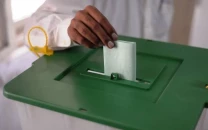

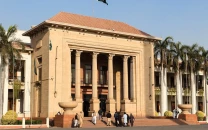
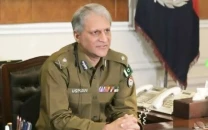
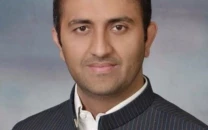











COMMENTS
Comments are moderated and generally will be posted if they are on-topic and not abusive.
For more information, please see our Comments FAQ